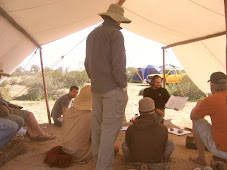Broth can be thought of as a protein supplement, and a calcium supplement. The chemical ingredients extracted from broth are glycine and proline (collagen/gelatin), calcium and phosphorus (minerals), hyaluronic acid and chondroitin sulfate (GAGs), and other minerals, amino acids and GAGs in smaller amounts.
Aside from the boiling of bones to release their minerals and nutritive elements, some tribes went to great lengths to supply yet another source of fat -- in addition to marrow and body fat deposits -- called "bone grease." This type of fat was attained by the long boiling of smashed bone and skimming the resultant grease off the surface. In a book called Imagining Head-Smashed-In: Aboriginal Buffalo Hunting on the Northern Plains, author Jack Brink goes into incredible detail about the production of bone grease, even going so far as to reproduce indigenous boiling techniques by adding hot, fire-heated rocks to buffalo hide containers filled with water. He explains how bone grease is different than marrow:
Though bone looks to be solid, it is really more of a latticework of twisted strands of bone tissue interspersed with tiny spaces ... The tiny spaces ... aren't empty; they are filled with small globules of fat. Called bone grease, it is a fat separate from the marrow in that is located in the bone structure itself, not the marrow cavity. (p. 190)
Another universal practice among primitive cultures is the use of blood. In a class I took at Wintercount one year, called "Using the Whole Animal," we caught the blood of a freshly slaughtered goat in a bucket and consumed the thick, scarlet red liquid after cooking it in a frying pan over a fire. It resembled ground meat and tasted very rich and satisfying. Of course, many of us know of the Masai and their practice of drinking raw, fresh blood -- so cooking isn't a requirement. Blood is a good source of electrolytes, especially sodium, which are sometimes hard to come by in primitive living. It is also high in protein and, in and of itself, a very sustaining food.
Powdered Woodrat
Now that we've reviewed some of the primitive cooking and eating practices for larger animals, let's examine how this information relates to the main subject of this series: small game. While it goes without saying that all of the nutrients present in large game are also present in smaller game, the difference in cooking techniques to maximize these nutrients requires some explanation. The cooking of small game is perhaps a simpler, more effective means of maximizing nutrition in primitive living due to the simple fact that long boiling times and extensive processing and butchering is not required. In fact, many small animals can be eaten whole, bones and all (of course, removing the intestines is a probably good idea in any case).
Campbell notes that similar processing techniques were observed historically in several other California tribes. Rabbits, hares, squirrels, and other small game were prepared this way. In addition to this, larger game bones, such as deer vertebrae, were also pounded and stored or eaten -- ancient calcium supplements in a sense. He describes other cooking methods for small game, including the boiling of whole small animals -- taken out temporarily to remove the skin similar to the above account -- and eaten whole, guts and all.
By using the whole animal, primitive peoples easily attained the nutrition required for optimal health, and modern abos would be wise to follow suit in primitive living excursions and experiments if they are to sustain their health and maximize nutrients to thrive in the wilderness.






